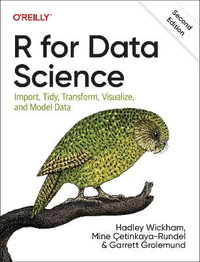| Foreword | p. XXV |
| Preface | p. XXVII |
| Introduction | p. 1 |
| Computation Science and Computation Engineering | p. 1 |
| What is 'Computation?' | p. 2 |
| A Minimalist Approach | p. 3 |
| How to Measure the Power of Computers? | p. 5 |
| Complexity Theory | p. 5 |
| Automata Theory and Computing | p. 6 |
| Why "Mix-up" Automata and Mathematical Logic? | p. 7 |
| Why Verify? Aren't Computers "Mostly Okay?" | p. 7 |
| Verifying Computing Systems Using Automaton Models | p. 9 |
| Automaton/Logic Connection | p. 10 |
| Avoid Attempting the Impossible | p. 11 |
| Solving One Implies Solving All | p. 11 |
| Automata Theory Demands a Lot From You! | p. 12 |
| A Brief Foray Into History | p. 12 |
| Disappearing Formal Methods | p. 13 |
| Exercises | p. 14 |
| Mathematical Preliminaries | p. 15 |
| Numbers | p. 15 |
| Boolean Concepts, Propositions, and Quantifiers | p. 15 |
| Sets | p. 16 |
| Defining sets | p. 16 |
| Avoid contradictions | p. 17 |
| Ensuring uniqueness of definitions | p. 18 |
| Cartesian Product and Powerset | p. 21 |
| Powersets and characteristic sequences | p. 22 |
| Functions and Signature | p. 22 |
| The [lambda] Notation | p. 23 |
| Total, Partial, 1-1, and Onto Functions | p. 25 |
| Computable Functions | p. 27 |
| Algorithm versus Procedure | p. 27 |
| Relations | p. 28 |
| Functions as Relations | p. 30 |
| More [lambda] syntax | p. 30 |
| Exercises | p. 31 |
| Cardinalities and Diagonalization | p. 37 |
| Cardinality Basics | p. 37 |
| Countable sets | p. 38 |
| Cardinal numbers | p. 38 |
| Cardinality "trap" | p. 39 |
| The Diagonalization Method | p. 39 |
| Simplify the set in question | p. 40 |
| Avoid dual representations for numbers | p. 40 |
| Claiming a bijection, and refuting it | p. 41 |
| 'Fixing' the proof a little bit | p. 41 |
| Cardinality of 2[superscript Nat] and Nat [right arrow] Bool | p. 43 |
| The Schroder-Bernstein Theorem | p. 43 |
| Application: cardinality of all C Programs | p. 44 |
| Application: functions in Nat [right arrow] Bool | p. 44 |
| Proof of the Schroder-Bernstein Theorem | p. 46 |
| Exercises | p. 50 |
| Binary Relations | p. 53 |
| Binary Relation Basics | p. 53 |
| Types of binary relations | p. 54 |
| Preorder (reflexive plus transitive) | p. 57 |
| Partial order (preorder plus antisymmetric) | p. 57 |
| Total order, and related notions | p. 58 |
| Equivalence (Preorder plus Symmetry) | p. 58 |
| Intersecting a preorder and its inverse | p. 59 |
| Identity relation | p. 59 |
| Universal relation | p. 59 |
| Equivalence class | p. 60 |
| Reflexive and transitive closure | p. 60 |
| The Power Relation between Machines | p. 61 |
| The equivalence relation over machine types | p. 62 |
| Lattice of All Binary Relations over S | p. 64 |
| Equality, Equivalence, and Congruence | p. 64 |
| Congruence relation | p. 64 |
| Exercises | p. 67 |
| Mathematical Logic, Induction, Proofs | p. 73 |
| To Prove or Not to Prove! | p. 73 |
| Proof Methods | p. 75 |
| The implication operation | p. 75 |
| 'If,' or 'Definitional Equality' | p. 76 |
| Proof by contradiction | p. 77 |
| Quantification operators [for all] and [exists] | p. 78 |
| Generalized DeMorgan's Law Relating [for all] And [exists] | p. 80 |
| Inductive definitions of sets and functions | p. 80 |
| Induction Principles | p. 82 |
| Induction over natural numbers | p. 82 |
| Noetherian induction | p. 84 |
| Structural | p. 85 |
| Putting it All Together: the Pigeon-hole Principle | p. 85 |
| Exercises | p. 86 |
| Dealing with Recursion | p. 93 |
| Recursive Definitions | p. 93 |
| Recursion viewed as solving for a function | p. 94 |
| Fixed-point equations | p. 95 |
| The Y operator | p. 96 |
| Illustration of reduction | p. 97 |
| Recursive Definitions as Solutions of Equations | p. 97 |
| The least fixed-point | p. 100 |
| Fixed-points in Automata Theory | p. 101 |
| Exercises | p. 103 |
| Strings and Languages | p. 105 |
| Strings | p. 106 |
| The empty string [epsilon] | p. 106 |
| Length, character at index, and substring of a string | p. 107 |
| Concatenation of strings | p. 107 |
| Languages | p. 107 |
| How many languages are there? | p. 108 |
| Orders for Strings | p. 108 |
| Operations on languages | p. 110 |
| Concatenation and exponentiation | p. 110 |
| Kleene Star, '*' | p. 112 |
| Complementation | p. 112 |
| Reversal | p. 113 |
| Homomorphism | p. 113 |
| Ensuring homomorphisms | p. 113 |
| Inverse homomorphism | p. 114 |
| An Illustration of homomorphisms | p. 115 |
| Prefix-closure | p. 115 |
| Exercises | p. 116 |
| Machines, Languages, DFA | p. 119 |
| Machines | p. 119 |
| The DFA | p. 121 |
| The "power" of DFAs | p. 126 |
| Limitations of DFAs | p. 126 |
| Machine types that accept non-regular languages | p. 127 |
| Drawing DFAs neatly | p. 129 |
| Exercises | p. 130 |
| NFA and Regular Expressions | p. 133 |
| What is Nondeterminism? | p. 135 |
| How nondeterminism affects automaton operations | p. 136 |
| How nondeterminism affects the power of machines | p. 137 |
| Regular Expressions | p. 137 |
| Nondeterministic Finite Automata | p. 141 |
| Nondeterministic Behavior Without [epsilon] | p. 141 |
| Nondeterministic behavior with [epsilon] | p. 143 |
| Eclosure (also known as [epsilon]-closure) | p. 145 |
| Language of an NFA | p. 147 |
| A detailed example: telephone numbers | p. 149 |
| Tool-assisted study of NFAs, DFAs, and REs | p. 151 |
| Exercises | p. 157 |
| Operations on Regular Machinery | p. 159 |
| NFA to DFA Conversion | p. 159 |
| Operations on Machines | p. 161 |
| Union | p. 162 |
| Intersection | p. 165 |
| Complementation | p. 165 |
| Concatenation | p. 165 |
| Star | p. 166 |
| Reversal | p. 167 |
| Homomorphism | p. 168 |
| Inverse Homomorphism | p. 168 |
| Prefix-closure | p. 169 |
| More Conversions | p. 169 |
| RE to NFA | p. 169 |
| NFA to RE | p. 170 |
| Minimizing DFA | p. 174 |
| Error-correcting DFAs | p. 176 |
| DFA constructed using error strata | p. 177 |
| DFA constructed through regular expressions | p. 177 |
| Ultimate Periodicity and DFAs | p. 179 |
| Exercises | p. 181 |
| The Automaton/Logic Connection, Symbolic Techniques | p. 185 |
| The Automaton/Logic Connection | p. 186 |
| DFA can 'scan' and also 'do logic' | p. 186 |
| Binary Decision Diagrams (BDDs) | p. 187 |
| Basic Operations on BDDs | p. 191 |
| Representing state transition systems | p. 192 |
| Forward reachability | p. 193 |
| Fixed-point iteration to compute the least fixed-point | p. 194 |
| An example with multiple fixed-points | p. 197 |
| Playing tic-tac-toe using BDDs | p. 198 |
| Exercises | p. 200 |
| The 'Pumping' Lemma | p. 205 |
| Pumping Lemmas for Regular Languages | p. 205 |
| A stronger incomplete Pumping Lemma | p. 209 |
| An adversarial argument | p. 210 |
| Closure Properties Ameliorate Pumping | p. 211 |
| Complete Pumping Lemmas | p. 212 |
| Jaffe's complete Pumping Lemma | p. 212 |
| Stanat and Weiss' complete Pumping Lemma | p. 213 |
| Exercises | p. 213 |
| Context-free Languages | p. 217 |
| The Language of a CFG | p. 218 |
| Consistency, Completeness, and Redundancy | p. 220 |
| More consistency proofs | p. 223 |
| Fixed-points again! | p. 224 |
| Ambiguous Grammars | p. 225 |
| If-then-else ambiguity | p. 226 |
| Ambiguity, inherent ambiguity | p. 227 |
| A Taxonomy of Formal Languages and Machines | p. 228 |
| Non-closure of CFLs under complementation | p. 230 |
| Simplifying CFGs | p. 232 |
| Push-down Automata | p. 234 |
| DPDA versus NPDA | p. 235 |
| Deterministic context-free languages (DCFL) | p. 235 |
| Some Factoids | p. 236 |
| Right- and Left-Linear CFGs | p. 237 |
| Developing CFGs | p. 239 |
| A Pumping Lemma for CFLs | p. 239 |
| Exercises | p. 242 |
| Push-down Automata and Context-free Grammars | p. 245 |
| Push-down Automata | p. 245 |
| Conventions for describing PDAs | p. 247 |
| Acceptance by final state | p. 247 |
| Acceptance by empty stack | p. 249 |
| Conversion of P[subscript 1] to P[subscript 2] ensuring L(P[subscript 1]) = N (P[subscript 2]) | p. 251 |
| Conversion of P[subscript 1] to P[subscript 2] ensuring N(P[subscript 1]) = L(P[subscript 2]) | p. 251 |
| Proving PDAs Correct Using Floyd's Inductive Assertions | p. 253 |
| Direct Conversion of CFGs to PDAs | p. 254 |
| Direct Conversion of PDAs to CFGs | p. 257 |
| Name non-terminals to match stack-emptying possibilities | p. 258 |
| Let start symbol S set up all stack-draining options | p. 258 |
| Capture how each PDA transition helps drain the stack | p. 259 |
| Final result from Figure 14.6 | p. 260 |
| The Chomsky Normal Form | p. 262 |
| Cocke-Kasami-Younger (CKY) parsing algorithm | p. 262 |
| Closure and Decidability | p. 264 |
| Some Important Points Visited | p. 264 |
| Chapter Summary - Lost Venus Probe | p. 267 |
| Exercises | p. 268 |
| Turing Machines | p. 271 |
| Computation: Church/Turing Thesis | p. 272 |
| "Turing machines" according to Turing | p. 273 |
| Formal Definition of a Turing machine | p. 273 |
| Singly- or doubly-infinite tape? | p. 275 |
| Two stacks+control = Turing machine | p. 276 |
| Linear bounded automata | p. 277 |
| Tape vs. random access memory | p. 278 |
| Acceptance, Halting, Rejection | p. 278 |
| "Acceptance" of a TM closely examined | p. 278 |
| Instantaneous descriptions | p. 279 |
| Examples | p. 279 |
| Examples illustrating TM concepts and conventions | p. 280 |
| A DTM for w#w | p. 282 |
| NDTMs | p. 282 |
| Guess and check | p. 283 |
| An NDTM for ww | p. 286 |
| Simulations | p. 286 |
| Multi-tape vs. single-tape Turing machines | p. 286 |
| Nondeterministic Turing machines | p. 286 |
| The Simulation itself | p. 287 |
| Exercises | p. 288 |
| Basic Undecidability Proofs | p. 291 |
| Some Decidable and Undecidable Problems | p. 292 |
| An assortment of decidable problems | p. 292 |
| Assorted undecidable problems | p. 294 |
| Undecidability Proofs | p. 295 |
| Turing recognizable (or recursively enumerable) sets | p. 295 |
| Recursive (or decidable) languages | p. 297 |
| Acceptance (A[subscript TM]) is undecidable (important!) | p. 298 |
| Halting (Halt[subscript TM]) is undecidable (important!) | p. 299 |
| Mapping reductions | p. 301 |
| Undecidable problems are "A[subscript TM] in disguise" | p. 305 |
| Exercises | p. 306 |
| Advanced Undecidability Proofs | p. 309 |
| Rice's Theorem | p. 309 |
| Failing proof attempt | p. 310 |
| Corrected proof | p. 311 |
| Greibach's Theorem | p. 312 |
| The Computation History Method | p. 312 |
| Decidability of LBA acceptance | p. 313 |
| Undecidability of LBA language emptiness | p. 313 |
| Undecidability of PDA language universality | p. 313 |
| Post's correspondence problem (PCP) | p. 315 |
| PCP is undecidable | p. 316 |
| Proof sketch of the undecidability of PCP | p. 317 |
| Exercises | p. 320 |
| Basic Notions in Logic including SAT | p. 323 |
| Axiomatization of Propositional Logic | p. 324 |
| First-order Logic (FOL) and Validity | p. 326 |
| A warm-up exercise | p. 326 |
| Examples of interpretations | p. 327 |
| Validity of first-order logic is undecidable | p. 329 |
| Valid FOL formulas are enumerable | p. 331 |
| Properties of Boolean Formulas | p. 331 |
| Boolean satisfiability: an overview | p. 331 |
| Normal forms | p. 332 |
| Overview of direct DNF to CNF conversion | p. 333 |
| CNF-conversion using gates | p. 336 |
| DIMACS file encoding | p. 337 |
| Unsatisfiable CNF instances | p. 339 |
| 3-CNF, [not equal]-satisfiability, and general CNF | p. 340 |
| 2-CNF satisfiability | p. 341 |
| Exercises | p. 342 |
| Complexity Theory and NP-Completeness | p. 345 |
| Examples and Overview | p. 346 |
| The traveling salesperson problem | p. 346 |
| P-time deciders, robustness, and 2 vs. 3 | p. 346 |
| A note on complexity measurement | p. 347 |
| The robustness of the Turing machine model | p. 348 |
| Going from "2 to 3" changes complexity | p. 348 |
| Formal Definitions | p. 348 |
| NP viewed in terms of verifiers | p. 348 |
| Some problems are outside NP | p. 349 |
| NP-complete and NP-hard | p. 350 |
| NP viewed in terms of deciders | p. 350 |
| An example of an NP decider | p. 351 |
| Minimal input encodings | p. 353 |
| NPC Theorems and proofs | p. 353 |
| NP-Completeness of 3-SAT | p. 354 |
| Practical approaches to show NPC | p. 358 |
| NP-Hard Problems can be Undecidable (Pitfall) | p. 360 |
| Proof that Diophantine Equations are NPH | p. 360 |
| "Certificates" of Diophantine Equations | p. 361 |
| What other complexity measures exist? | p. 362 |
| NP, CoNP, etc. | p. 362 |
| Exercises | p. 365 |
| DFA for Presburger Arithmetic | p. 369 |
| Presburger Formulas and DFAs | p. 371 |
| Presburger formulas | p. 371 |
| Encoding conventions | p. 373 |
| Example 1 - representing x [less than equal to] 2 | p. 373 |
| Example 2 - [for all]x.[exists]y.(x + y) = 1 | p. 375 |
| Conversion algorithm: Presburger formulas to automata | p. 376 |
| Pitfalls to Avoid | p. 378 |
| The restriction of equal bit-vector lengths | p. 379 |
| Exercises | p. 380 |
| Model Checking: Basics | p. 381 |
| An Introduction to Model Checking | p. 381 |
| What Are Reactive Computing Systems? | p. 384 |
| Why model checking? | p. 385 |
| Model checking vs. testing | p. 387 |
| Buchi automata, and Verifying Safety and Liveness | p. 389 |
| Example: Dining Philosophers | p. 390 |
| Model (proctype) and property (never) automata | p. 394 |
| Exercises | p. 396 |
| Model Checking: Temporal Logics | p. 399 |
| Temporal Logics | p. 399 |
| Kripke structures | p. 399 |
| Computations vs. computation trees | p. 401 |
| Temporal formulas are Kripke structure classifiers! | p. 403 |
| LTL vs. CTL through an example | p. 405 |
| LTL syntax | p. 406 |
| LTL semantics | p. 406 |
| CTL syntax | p. 407 |
| CTL semantics | p. 408 |
| Exercises | p. 414 |
| Model Checking: Algorithms | p. 419 |
| Enumerative CTL Model Checking | p. 419 |
| Symbolic Model Checking for CTL | p. 421 |
| EG p through fixed-point iteration | p. 421 |
| Calculating EX and AX | p. 424 |
| LFP and GFP for 'Until' | p. 425 |
| LFP for 'Until' | p. 426 |
| GFP for Until | p. 427 |
| Buchi Automata and LTL Model Checking | p. 428 |
| Comparing expressiveness | p. 428 |
| Operations on Buchi automata | p. 430 |
| Nondeterminism in Buchi automata | p. 431 |
| Enumerative Model Checking for LTL | p. 432 |
| Reducing verification to Buchi automaton emptiness | p. 433 |
| Exercises | p. 436 |
| Conclusions | p. 439 |
| Book web site and tool information | p. 443 |
| Web site and e-mail address | p. 443 |
| Software tool usage per chapter | p. 443 |
| Possible Syllabi | p. 444 |
| BED Solution to the tic-tac-toe problem | p. 447 |
| References | p. 453 |
| Index | p. 461 |
| Table of Contents provided by Ingram. All Rights Reserved. |
























